

You were there...
Our second showcase of readers' photographs takes us from Aintree and Brands to Dundrod and Monza via three lensmen Michael Pitts of Chippenham sent us 21 images covering the period 1952-58.…

Lyndon McNeil
He might be unfamiliar to the wider world, but Ralph Firman is one of the most distinguished figures in British motor racing. If you bought a car from him in the 1970s, chances are that you’d still recognise him instantly. Time’s passage has not greatly altered his distinctive gait.
When Motor Sport arrives at the White Lodge, Attleborough, Norfolk he is sitting outside, small whisky to hand as he chats to long-time collaborator John Uprichard. “I hope you don’t mind my bringing John along,” Firman says. “He is very good at remembering the stuff I forget.” As it transpires, though, he won’t require any triggers. He orders fish pie as we repair to an indoor table, switches to neat water and reflects on a romantic liaison that led him into motor racing as a young man accustomed to servicing Ford Zephyrs.
“After leaving school,” he says, “I went to work as a mechanic in an Ipswich garage – and that taught me a lot, because we serviced a huge variety of machinery. I had a lucky break, though, when my sister fell in love with and later married Jim Russell, who had established his racing school at Snetterton. He asked whether I fancied working there instead and it seemed like a cleaner option than mucking about with road cars, so I accepted.”
His duties included preparation of the school’s single-seater fleet – and also converting Formula Junior and F3 chassis to look like F1 machinery when Russell landed a contract to supply dummy chassis for the filming of John Frankenheimer’s Grand Prix.
Firman stayed there until 1967, when he took his tools to Anglo-Spanish Racing, which was running a pair of Brabham BT21s for Englishman Brian Classick and Spaniard Adam Czartoryski in European F3 races.
“They were fantastic days,” he says, “and I lived in a big bus with other team members. It was all very hand to mouth, drivers using the start money they were paid at each race to cover the cost of getting to the next one. Some would complete three laps and then retire, having done all they needed to collect their cash, although our guys never took that approach.”
The following year he returned to his brother-in-law’s more stable working environment – and in ’69 he was tasked with building up a Lotus 59 F3 chassis. Brazilian Emerson Fittipaldi had arrived in the UK at the season’s dawn and immediately set the track alight in Formula Ford, sufficiently so to trigger a mid-season promotion with Russell’s team. “He was great,” Firman says, “a genuinely nice fellow, as well as very quick. Although he scored quite a few wins, I particularly remember a meeting late in the season at Brands Hatch, the Motor Show 200 on the full circuit, when Emerson was quickest in practice.
We had a warm-up session the following morning and, in the days of the 1.0-litre ‘screamers’, we used to change engines fairly regularly – I think that era of F3 explains why I’m slightly hard of hearing now. Emerson wanted me to take the timing board and stopwatch into the pits, but I said, ‘No, just go out and do a couple of laps. This is the best engine we’ve got and I want to make sure it has no leaks.’ But he wanted a proper run. It was one of those mornings when it was foggy around the far side of the circuit, and the dew was down, and on about his second lap Emerson came into Clearways, got on the kerbs and went straight off into the bank, writing off the car. I remember Jim turning up shortly afterwards and asking how things were going. I just pointed towards the wreckage at Clearways…
“For 1970 we struck a deal to run Emerson in F2 but, typically, the bloody car wasn’t ready at Lotus. So I worked flat out and ended up doing a 36-hour stint to make sure it was finished for the opening race at Thruxton, where gearbox trouble prevented him from starting. We then went over to Hockenheim and had a few more niggling problems, although he still finished sixth, but by now Colin Chapman was alert to just how good Emerson was and wanted him in his own fold, run by Lotus, and they took the car back.
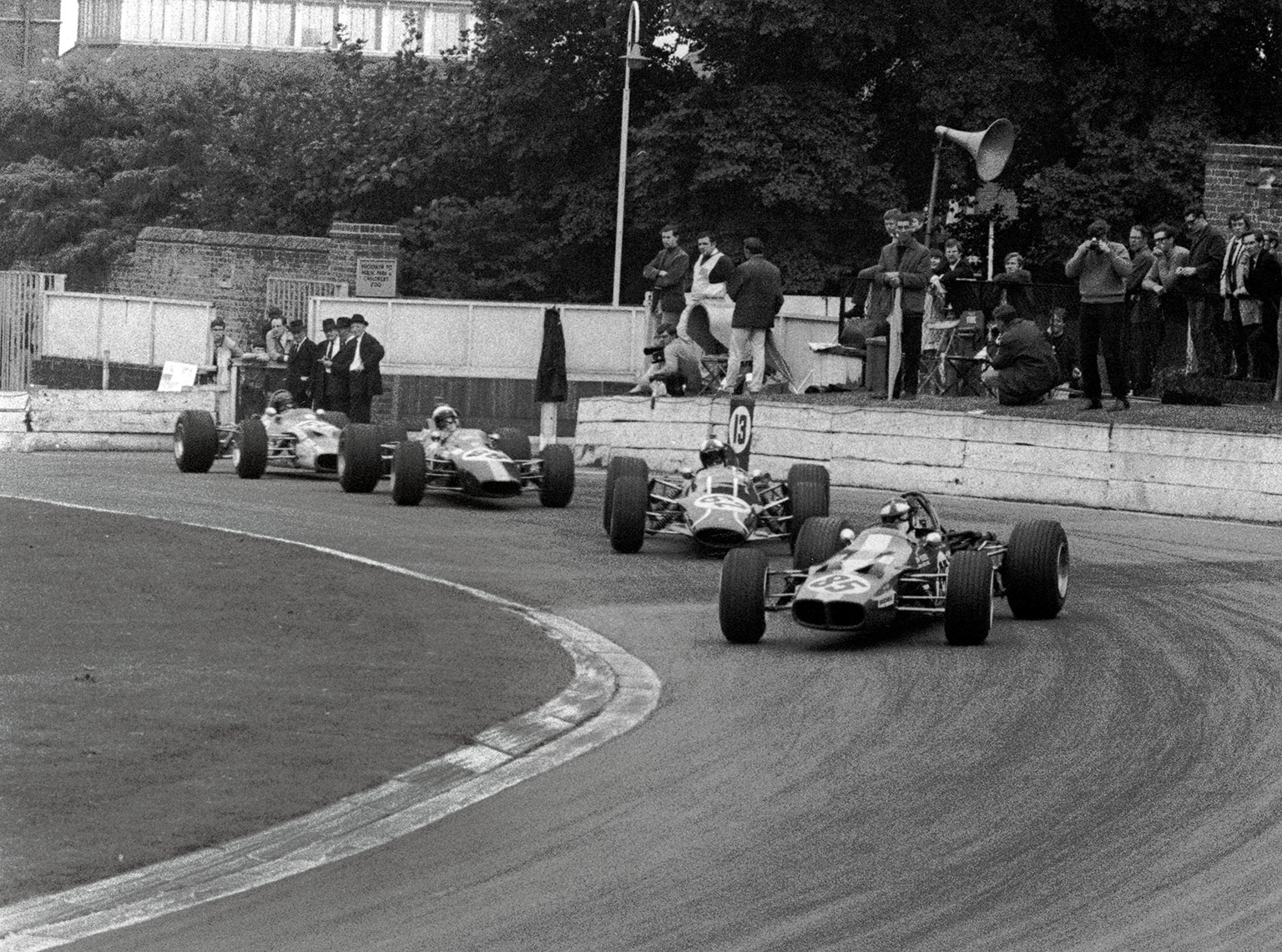
After running him in Formula Ford, Firman also helped Emerson Fittipaldi into F3. Here the Brazilian leads the 1969 Reg Parnell Trophy at Crystal Palace in a Jim Russell-entered Lotus 59
Motorsport Images
“At that stage I thought it might be a good time to start running my own racing workshop, so Ralph Firman Racing Preparations came into being. In 1971 I did some F3 with Rikky von Opel – he’d raced in Formula Ford, then his father died and, according to the newspapers, he and his sister were in line for an £80 million inheritance [von Opel’s great-grandfather Adam founded the car company], so Rikky had an absolute fortune to spend on racing. He and I got on fine and he wanted me to work for him on a full-time basis, but I was more interested in doing my own thing, with a variety of different people, so he went off with Mo Nunn to drive an Ensign, won the Lombard British F3 title in ’72, graduated to F1 and then fairly swiftly disappeared. I haven’t spoken to him since. One day many years ago I phoned Mo to ask whether he had Rikky’s contact details, but the last Mo knew was that he’d gone off to join some kind of commune.”
Firman carried on running F3 cars through 1972, but found it increasingly hard to keep his head above water. “With one thing and another I had bills that weren’t being paid, the usual motor racing thing, so I said, ‘Right, I’m going to build something’ – and that turned out to be the first Van Diemen. I opted for Formula Ford because I’d always liked the category, the cars were reasonably cheap to build – and of course I had a good potential customer in Jim, who placed an order once he’d seen what we were building.”
And the reason for the company name? Firman chuckles with the answer.
“Australian driver Ross Ambrose had a Merlyn F3 car and came over to tour around Europe,” he says. “Ross wanted somewhere to prepare it and rented a bit of my workshop space. When he heard what I was doing, he took an interest and suggested that he should take over the business side and leave me to run all the mechanical stuff. He put in £250 and I had the machines and stuff, which we assessed were probably worth about £250, so that was our deal. As far as the name was concerned, Ross came in one morning, while I was busy hacksawing something or other, and said, ‘What d’you think about Van Diemen?’ I replied that I couldn’t even pronounce it. He explained that all the English convicts had been sent to Van Diemen’s Land, now Tasmania, and that’s where he was from, so he felt it was a good choice to cover both of us… As far as I was concerned he could call it whatever he wanted, but I actually quite liked it once I’d worked out how to get my tongue around it.”
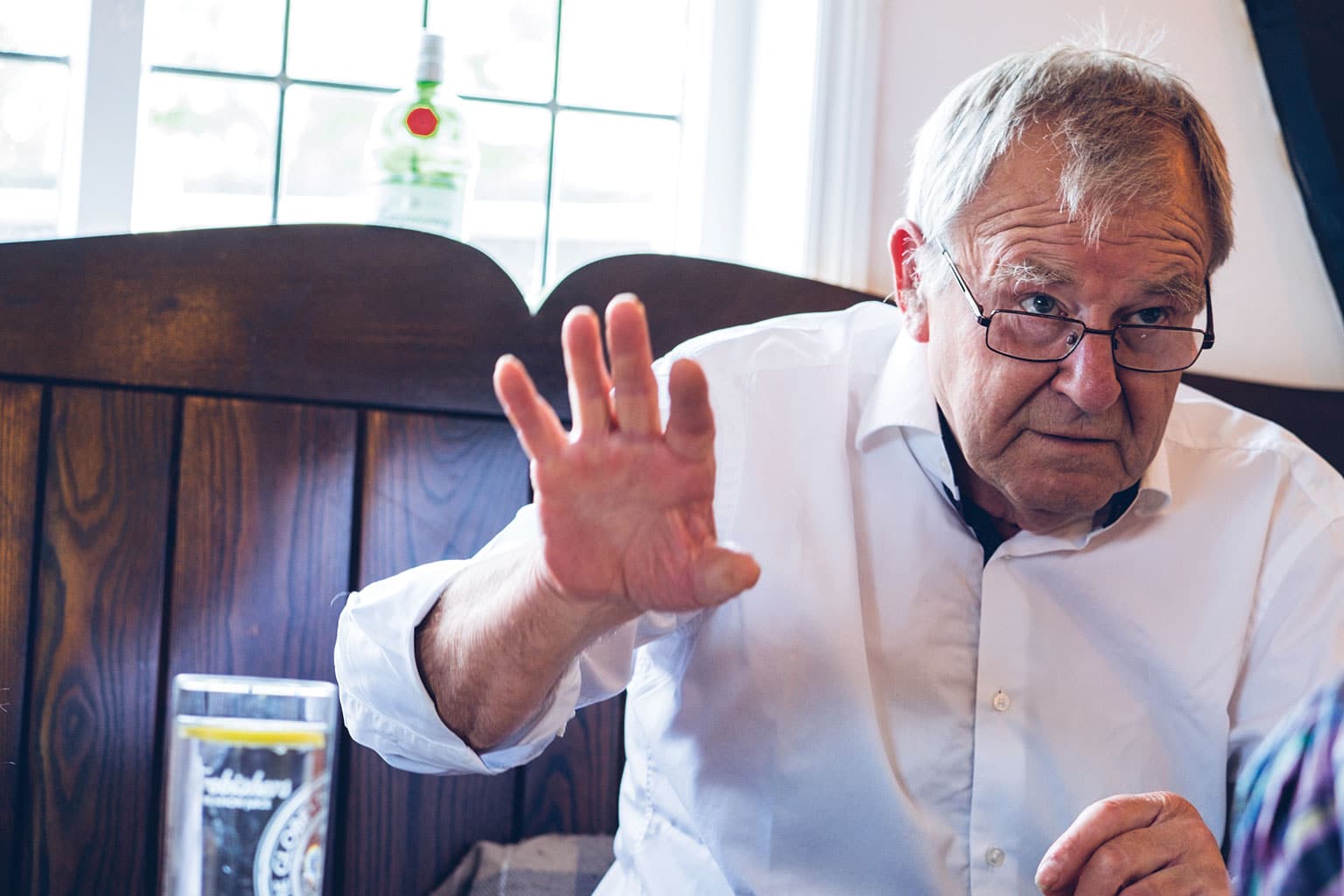
Aside from the noted Brazilians, Firman also ran drivers like Tommy Byrne and Dan Wheldon
The company enjoyed a fruitful first season, Don MacLeod taking his Van Diemen FA73 to victory in both the BRSCC FF1600 Championship and the Formula Ford Festival, though Ambrose left at the year’s end to pursue other business interests and that ‘FA’ suffix became ‘RF’. Van Diemen’s startling early success was not, however, initially maintained. “We’d run Don’s car in 1973,” Firman says, “but didn’t really have a works team as such for the next couple of years. There were some race wins, but by 1976 Hawke had come up with the DL15 – a much better car than ours – and lots of drivers bought that. I knew we needed to move on, so I went to Birmingham to see David Baldwin, who had been working with the Fittipaldi F1 team, and told him I needed a new car. We sat there talking until about four in the morning before he eventually agreed to design it. I loved Formula Ford and could see the numbers we might be able to sell if we came up with something truly competitive.”
The answer was Baldwin’s Van Diemen RF77, with which Brazilian Chico Serra secured the 1977 BRSCC title before capping his campaign with a Festival victory. “We never looked back after that,” Firman says. “It proved we could run cars well, so I decided we’d carry on doing our own thing and make sure we showcased our cars to the very best of their abilities, good or bad.”
Wasn’t it tricky selling cars when customers knew they’d be taking on an official factory team?
“I would never commit to a development without making enough to satisfy any customers that wanted them – and that built trust,” Firman says. “It was obviously in my interest if they did well, so I didn’t hold anything back and I think that gave them confidence. If a customer team could beat the works cars, it reflected very well on the product.”
It was an ultra-competitive time for Formula Ford and Van Diemen faced stiff opposition from such as Royale, Hawke and Crosslé plus, just around the corner, Lola and Reynard. The company didn’t win everything, but it achieved multiple championship and Festival victories with drivers such as Michael Roe, Terry Gray, Roberto Moreno, Ayrton Senna (or Da Silva, as he was known at the time), Tommy Byrne, Dave Coyne, Bertrand Gachot, Mark Blundell, Paul Warwick, Roland Ratzenberger, Eddie Irvine, Vincenzo Sospiri, David Coulthard, Jan Magnussen and Mark Webber, to name but a few.
“I’ve never compared drivers from year to year,” Firman says. “I remember [Van Diemen race engineer] Micky Galter coming up to me early one season and saying, ‘Wow, we’ve got a fantastic crop of drivers this season’ – I think the top 10 or 12 on the grid were covered by little more than a tenth, but from my perspective they might all have been fantastic, average or perhaps even no good at all. You could never be certain from one season to the next.
“I was disappointed that Dave Coyne [1990 Festival winner] didn’t progress higher up the ladder, though. He won a lot of junior races but could have achieved so much more if he’d taken greater care of himself. He’s an absolutely fantastic driver, one who really should have made it to F1, but he enjoyed the nightlife and a few drinks – absolutely his entitlement – but he had the ability to go all the way to the top.”
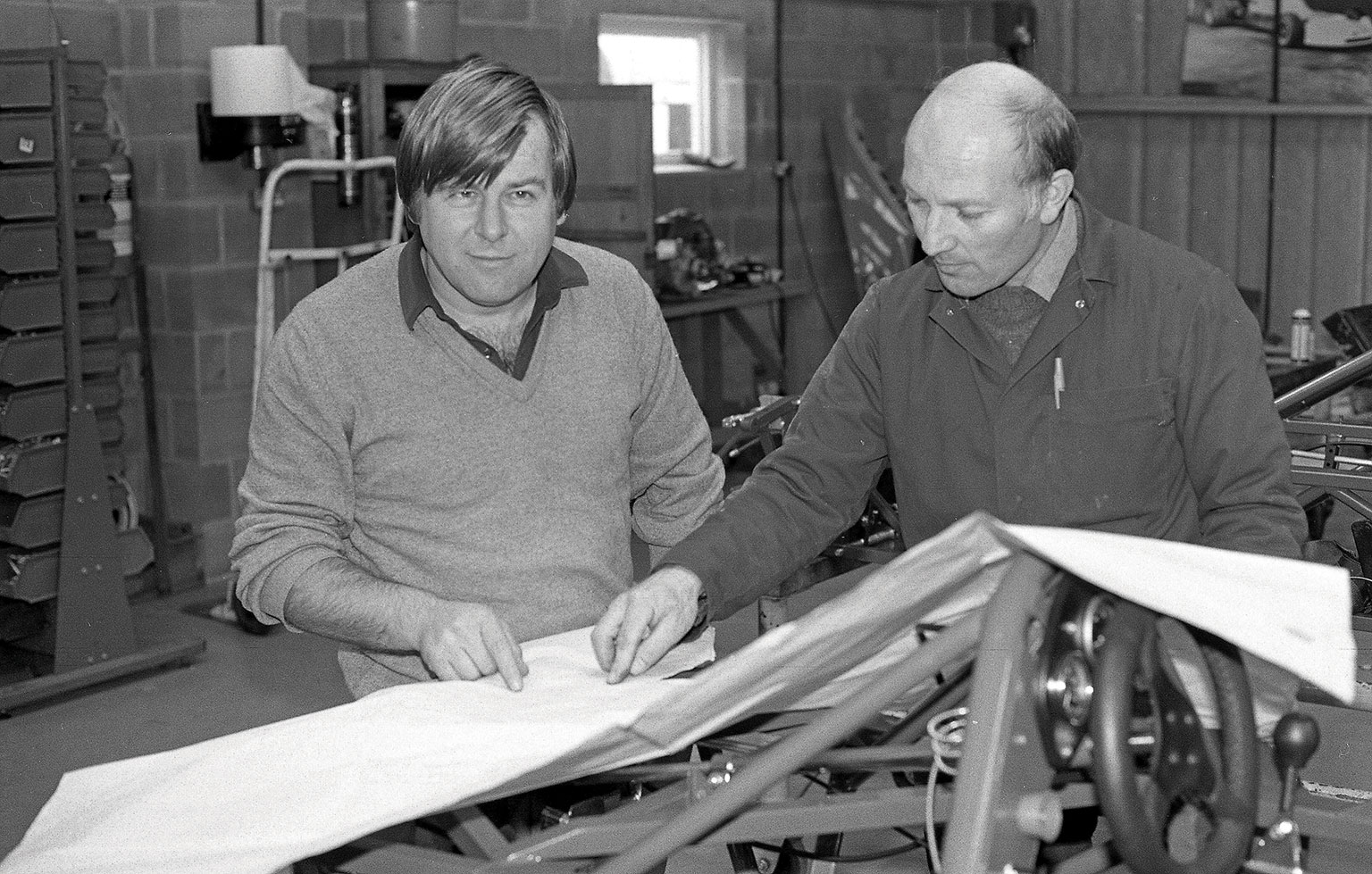
Firman (left) looks over plans for Senna’s RF81 design alongside engineer Derek Wild
The full story of Senna’s 1981 Formula Ford season with Van Diemen was covered in the December 2018 edition of Motor Sport, but – by way of a refresh – was there anything in particular that made him stand apart from other drivers? “Ayrton was tough and hard on the track,” Firman says, “as most of them are, but away from it I always just considered him a normal bloke. The main thing with him was his extraordinary focus – even during downtime. He’d win a race, then be in the office by 9am on Monday complaining that his engine hadn’t been good enough. I’d reply, ‘Jesus, you won by eight seconds’ – but he still wanted me to contact our supplier Minister to ask for more power.
“We ran lots of South American drivers, but most settled in pretty well – even though I suppose Norfolk is a bit different from São Paulo. We looked after them and my wife Angela was very involved in all of that. We’d find them a house, rent them a TV, open a bank account… One or two came and went pretty quickly, either because they were homesick or else had money problems, but the serious ones all hung around.”
Van Diemen had started producing cars for the higher-spec Formula Ford 2000 class in 1978 – “The first one wasn’t that big a deal, we just added wings and a bigger engine to an FF1600 chassis” – and in the mid ’80s was contracted by John Webb (then head of MCD, which controlled Brands Hatch and affiliated circuits) to produce chassis for a glut of new one-make series – Formula First, Formula Forward and Multisports.
“I never really agreed with one-make racing,” Firman says, “but if we hadn’t done the deal it would have gone to somebody else, so it was a sound business decision. Once you’ve built the car and sorted it out, beyond the first season you don’t have to do a great deal apart from cleaning it. It didn’t bring on young mechanics or engineers, but as a cash cow it was great for keeping a workforce busy.
“Those Formula First cars were little beasts, but at the time they were what people wanted – a dad and his lad could run one from a van and a trailer. FF1600 had already advanced beyond that stage – to succeed you needed to be running with a professional team, to have an engineer and so on. The same thing had happened with F3 in the 1960s. That was the direction FF1600 took and by the end of the 1980s I’d say it was far too expensive – and then in 1993 they changed to the Zetec engine, which pretty much finished it for me. I didn’t lose interest, but the cars were heavier with that bloody great lump in the back and the racing wasn’t as good. It took us two or three seasons to get the chassis properly sorted, to dial out the understeer and stuff. I don’t think it did the category any favours, but that’s the way Ford wanted to go.”
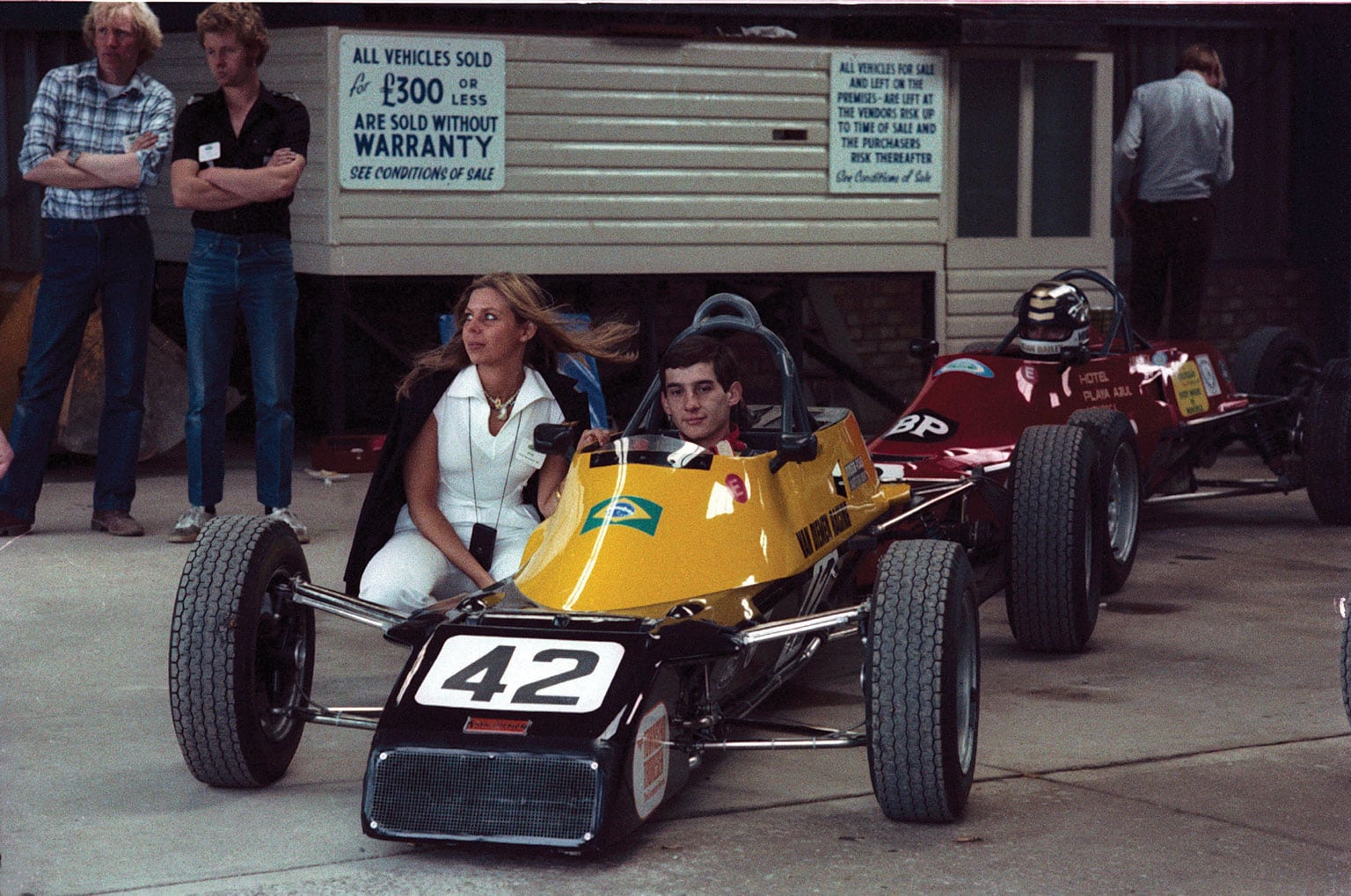
Ayrton Senna, or Da Silva as he was known then, made his breakthrough at the wheel of a Van Diemen RF81
Motorsport Images
Uprichard: “There wasn’t an awful lot to the old Kent engine. If you had a misfire or something, if a wire had come off the coil, it was easy to fix. As soon as you went to the Zetec it had an ECU, a wiring loom, all that kind of stuff – enough to stump any ordinary guy. It became difficult to run a car yourself.”
While Formula Ford had conceivably lost its direction, the same could not have been said for one of its staunchest supporters. Van Diemen had consistently been building and selling more than 100 racing cars per annum – peaking at 170 when it landed John Webb’s one-make deals – and had also branched out into other disciplines, building an F3 car for the 1992 season.
“We were so busy what with our regular production plus all the one-make stuff that had been coming in, then we started selling cars to racing schools in Japan and where have you,” Firman says. “The F3 project was probably a mistake, because we had too much going on and my heart wasn’t really in any jobs that we couldn’t do properly.”
Uprichard: “We’d built the Multisports car for Brands Hatch – and then Ralph commissioned somebody to do a concept study, to see what a road-going version might look like. Ralph had the idea of doing a road car, maybe a Caterham-type thing with Van Diemen badging, because the firm had such a good name at the time that we thought it might help it to sell. I think he was probably on his own, though, because everybody else in the place was dead keen on tackling F3, which was seen as such a big step forward.”
Firman: “We were totally productionised with a fantastic machine shop and had invested heavily in the latest CNC [computer numerical control] tooling, and had good people running it. The fabrication shop was very efficient, too, but if I’m honest we were making stuff for peanuts. Really, we’d have done better if we’d stuck with the idea of a road car – I reckon we had a potential 4-5000 customers, who’d already bought Van Diemens. [Former Lola designer] Andy Thorby was working on the F3 programme and had got as far as drafting a new monocoque for 1993. I think ours was the first F3 car with a monoshock suspension system, a concept subsequently embraced to exceptionally good effect by Dallara, but we’d had problems with flexing at the rear of the 1992 car. To counter this, the tub of the proposed ’93 chassis extended back much further than normal and featured a couple of holes for the driveshafts. We got as far as building one. The carbon structure came back as far as the gearbox, which I’m not sure anybody has done since, so we thought we’d have a super-stiff chassis, but I woke up one morning, went to the factory, apologised to Andy and told him I was canning the project.”
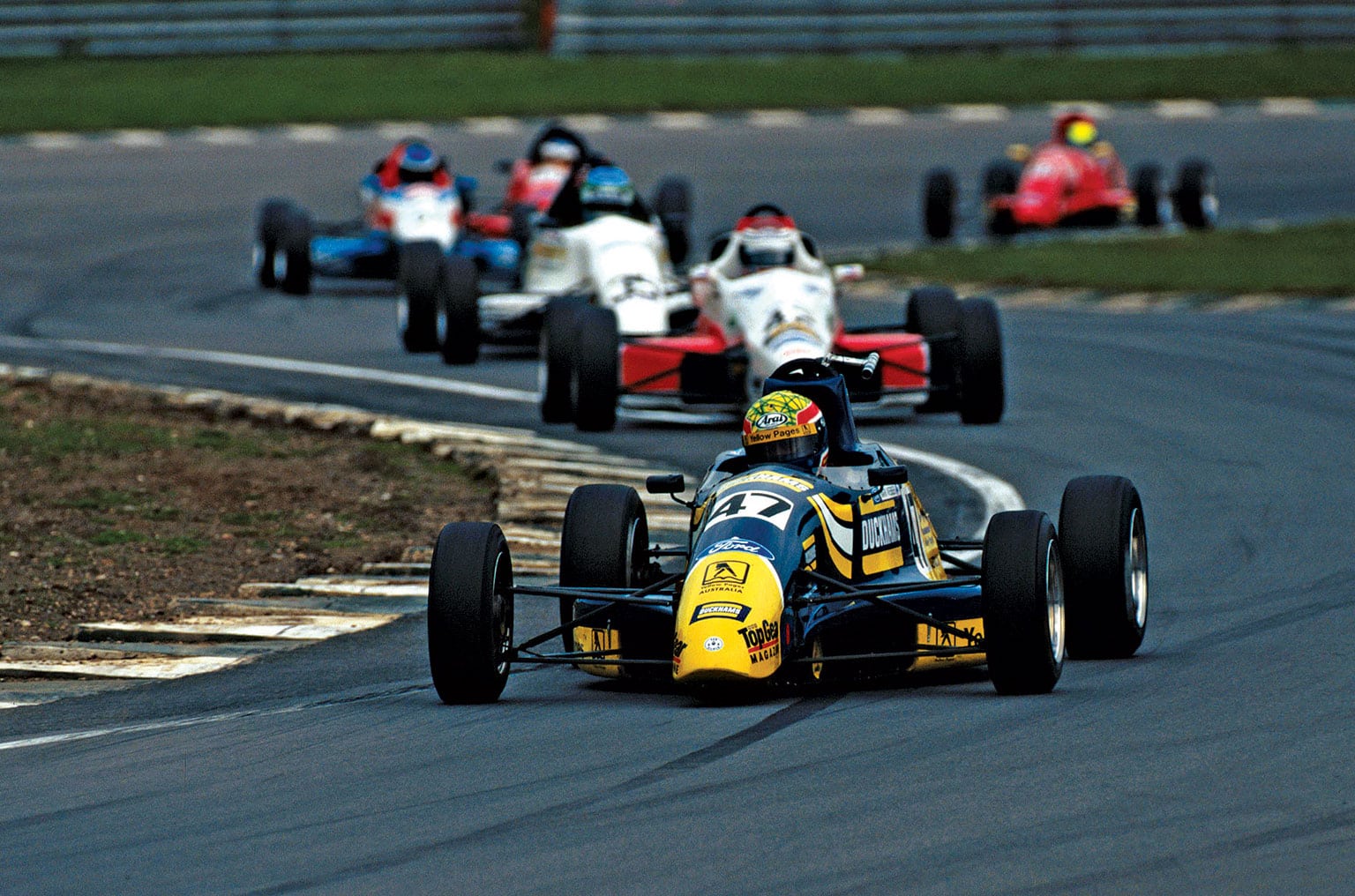
Mark Webber on his way to victory in the 1996 Festival, a result that sealed the marque’s ninth win in 11 years at the event
Motorsport Images
And where is that monocoque now? “Good question,” Firman says, “and one I asked only a few months ago. I haven’t seen it for some time and have no idea what became of it.”
Although Van Diemen continued to accumulate contracts during the 1990s – for instance landing a deal to build the new Formula Vauxhall Junior single-seater, ironically a direct competitor to FF1600 – that road car idea continued to bug him… and ultimately played a part in his decision to sell the business. “At one stage,” he says, “we’d had to rely on winning races to generate business, but with the one-make thing you could just bang out a load of cars – at least in the first year of a new formula. The way I saw it, we needed to expand – and probably to move into road car production, about which I’d started thinking seriously again. In that instance, if I were to reinvest it would be another 10 years before I started to see any return. I think I was getting a bit long in the tooth for that kind of commitment, so when [American businessman] Don Panoz made me a reasonable offer I decided to accept. I saw Don as a way to expand and use the good name of Van Diemen alongside his existing motor sport businesses [G Force and Élan Motorsport Technologies], but it didn’t work out. I stayed on as CEO for three years and was paid very well, but…
“When Don wanted to build a GT2 racer I put a team together and costed everything out, but he insisted it should be front-engined. Stupidly, I suppose, as he was paying the bills, I dug in my heels. We made a quarter-scale model, put it in the wind tunnel and proved conclusively that the rear wing would be more efficient with a rear-engined car, but Don wasn’t to be persuaded. He asked whether I’d ever seen a horse behind a cart, at which point I told him I wouldn’t do it. Daft, really, but I suppose I was too much of a purist to do something I knew was wrong – and it would be my job to try to sell the thing. So that was that. I figured it was time to move on and thought Don would make good use of Van Diemen’s name to expand the business, but he seemed to have reached the conclusion that it was just a funny little company that built funny little cars. He didn’t really grasp what we’d been all about – and if I’d known that beforehand, I probably wouldn’t have sold up.”
That was 2002 and Firman spent a few years pursuing other interests, managing an industrial estate close to Snetterton before building a series of Formula 1000 single-seaters – known as RFRs – that were exported to North America, New Zealand and elsewhere from 2008. Eight years later, with Formula Ford 1600 never really having gone away (its prestige might have dipped, but its competitive zest remains), he returned to his roots and produced the Firman RFR16, an example of which Luke Williams used to win the UK FF1600 Championship in 2017.

Firman is currently working with his son Ralph Jr (left) in the family photo
Motorsport Images
However, perhaps the largest contract of his comeback came in the form of a partnership with Jonathan Palmer’s MotorSport Vision organisation, for which Firman developed a car for the all-new BRDC Formula 4 Championship in 2013. Those machines helped launch the careers of drivers like George Russell, Jake Hughes, Harrison Newey and Charlie Eastwood over the three years of use before being replaced by the carbon-tubbed Tatuus offerings the rebadged BRDC British F3 Championship uses today.
Uprichard: “When Van Diemen was at its peak I think we had agents in about 20 countries, so there was a lot of travelling. When we decided to do it this time, we just wanted to focus on the UK. We thought it would be great to go racing without ever having to go near an airport.”
Firman: “The trouble with that, of course, is that you’re only going to sell four or five cars a year, so it’s not worth the effort – especially when people are still winning FF1600 races in 20-year-old Van Diemens!”
The world has changed since the days when Formula Ford cars could occasionally be seen crossing the A11 under their own steam, to get from the Van Diemen factory across to Snetterton for a spot of testing – much quicker than loading them into a truck – but Firman’s passion for the industry has never wavered. He is now working in partnership with his former grand prix racer son Ralph Jr, whose first Firman R1 sports-racer should be ready early in 2020. “It’s basically a single-seater with prototype bodywork and lots of downforce,” Firman says. “I’m happy to get involved on the mechanical side while Ralph Jr does all the running around.”
Does he harbour any regrets about the hand he’s been dealt? “None at all,” he says. “Somebody once told me, ‘Ralph, you don’t make mistakes, you’re just on a learning curve.’ That’s always been my attitude.”
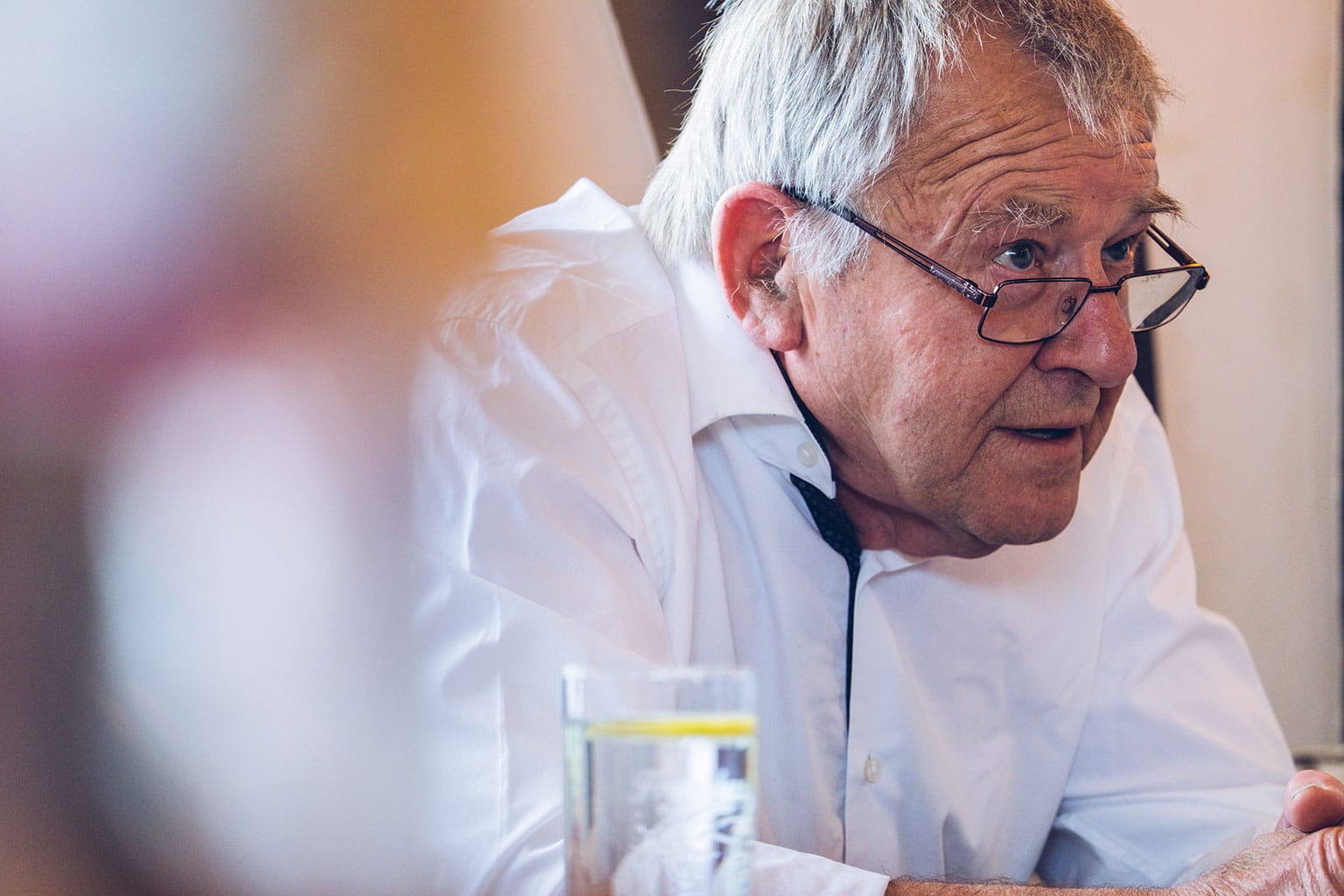
Ralph Firman is still involved in building racing cars
• 1963 Starts work as mechanic with brother-in-law Jim Russell’s racing school
• 1967 Joins F3 team Anglo-Spanish Racing
• 1969 Runs Emerson Fittipaldi’s Jim Russell-entered Lotus 59 in British F3 l 1970 Sets up Ralph Firman Racing Preparations
• 1973 Van Diemen formed; Don MacLeod takes first car to a BRSCC championship/Formula Ford Festival double
• 1975 Acquires assets of defunct GRD and markets short run of F3 cars
• 1977 Chico Serra’s success in British FF1600 establishes Van Diemen as one of the market leaders
• 1981 Signs Ayrton Senna as factory driver
• 1986 Lands contract to build new Formula First cars
• 1992 Van Diemen returns briefly to F3
• 1999 Sells company to US entrepreneur Don Panoz, but remains on board as CEO
• 2002 Leaves Panoz to focus on property
• 2008 Builds bike-powered RFR Formula 1000 cars
• 2016 Returns to FF1600 with Firman brand
• 2017 Luke Williams wins National FF1600 title in Firman RFR16
• 2019 Working with son Ralph Jr on fledgling Firman R1 sports car project